- The Raspberry Tree: A Closer Look at the Deceptive Tactics
- Deceptive Seeds
- Rootstock Substitution
- Unachievable Claims
- The Importance of Awareness
- Hidden Agenda: Unveiling the True Nature of Raspberry Trees
- Misleading Name:
- Aggressive Spreading:
- Unrelenting Thorniness:
- The Allure of Raspberry Fruits:
- Unmasking the True Nature:
- Beware of the Chameleon: How Raspberry Trees Camouflage Themselves
- False Promises: Debunking the Exaggerated Benefits of Raspberry Trees
- 1. Endless Supply of Raspberries
- 2. Minimal Maintenance and Care
- 3. Disease and Pest Resistance
- 4. Fast Growth and Early Fruiting
- 5. One-Time Investment
- Invasive Invaders: Understanding the Destructive Impact of Raspberry Trees
- 1. Root System Invasion
- 2. Shade and Light Competition
- 3. Seeding and Reproduction
- 4. Difficulty of Eradication
- Conclusion
- The Whisperers: Unmasking the Seed Dispersal Tactics of Raspberry Trees
- 1. The Disguised Messenger: Birds
- 2. Nature’s Bounty Hunters: Rodents
- 3. Wind: A Silent Partner
- 4. Human Intervention: Unwitting Accomplices
- Conclusion
- Shapeshifters in Disguise: Recognizing the Changing Faces of Raspberry Trees
- 1. The Innocent Sprout
- 2. The Climbing Vine
- 3. The Blossoming Beauty
- 4. The Fruiting Master
- 5. The Dormant Warrior
- Master Manipulators: Exposing the Manipulative Techniques of Raspberry Trees
- 1. Aggressive Root Systems
- 2. High Reproductive Capacity
- 3. Allelopathy
- 4. Thorny Defenses
- 5. Rapid Growth and Expansion
- Uncovering the Truth: How to Protect Your Garden from Raspberry Tree Deception
- Recognizing the Raspberry Tree
- Preventing Raspberry Tree Invasion
- Removing Raspberry Trees
- Conclusion
- Question-answer:
- What are some deceptive tactics used by raspberry tree sellers?
- How can I tell if a raspberry tree is non-fruiting?
- What are some signs that a raspberry tree is damaged or diseased?
- Are there any specific maintenance requirements for raspberry trees?
- What is a realistic yield expectation for raspberry trees?
- How can I protect myself from deceptive tactics when buying raspberry trees?
- Do raspberry trees require any specific fertilizers?
- Video: Tips for Growing Raspberries with Ashley Patterson
If you’ve ever tried your hand at gardening, you may have come across the elusive raspberry tree. It’s a plant that promises sweet, juicy berries but manages to leave a trail of confusion in its wake. What many unsuspecting gardeners don’t realize is that there is no such thing as a raspberry tree. Yes, you heard that right – it’s all a carefully orchestrated deception!
The raspberry tree is actually a clever ploy created by some mischievous horticulturists to confuse and confound gardeners. With its tall, tree-like appearance and enticing berries, it’s no wonder so many fall prey to its charms. But don’t be fooled – this so-called raspberry tree is nothing more than a combination of various raspberry plant cultivars grafted onto a sturdy trunk or support structure.
Why would anyone go to such lengths to deceive innocent gardeners, you may ask? Well, the answer lies in the marketability of the so-called raspberry tree. By presenting the plant as a tree rather than a humble shrub, nurseries and garden centers can charge a premium for this “novelty” item. It’s a marketing tactic designed to exploit our desire for unique and eye-catching plants.
So, the next time you come across a raspberry tree in a catalog or at your local nursery, take a moment to pause and reflect. Remember that what you’re looking at is not a real tree, but a cleverly crafted amalgamation of raspberry plants. Don’t let its deceptive tactics fool you – stick with the tried and true raspberry shrubs if you want a reliable and productive berry crop!
The Raspberry Tree: A Closer Look at the Deceptive Tactics
When it comes to gardening, there are few plants as beloved as the raspberry tree. With its vibrant berries and lush foliage, it’s no wonder that gardeners around the world are eager to cultivate this delightful plant. However, recent investigations have revealed a dark secret about the raspberry tree.
Deceptive Seeds
One of the most common tactics used to deceive unsuspecting gardeners is the mislabeling of raspberry tree seeds. Unscrupulous sellers will often market ordinary raspberry bush seeds as “raspberry tree seeds.” These deceptive seeds may look similar, but they will never grow into the towering trees advertised.
To avoid falling prey to this deceptive tactic, gardeners should be cautious when purchasing raspberry tree seeds. It is essential to research reputable sellers and read reviews from other gardeners to ensure the authenticity of the seeds.
Rootstock Substitution

Another deceptive tactic employed by unscrupulous sellers is the substitution of rootstock. Instead of providing true raspberry tree rootstock, dishonest sellers may substitute it with rootstock from other plants, such as ordinary raspberry bushes or even completely unrelated species. This deceit can result in disappointment and frustration for unsuspecting gardeners.
To avoid falling victim to rootstock substitution, gardeners should be vigilant when purchasing raspberry tree saplings. They should inspect the rootstock carefully, looking for signs of grafting or potentially unfamiliar roots that may indicate substitution.
Unachievable Claims
Some sellers will make outrageous claims about the raspberry tree’s size, fruit yield, or hardiness to entice buyers. They may promise towering trees with bountiful harvests or claim that their raspberry trees can withstand extreme climates. However, gardeners must be cautious of these exaggerated claims.
To avoid disappointment, it is crucial for gardeners to research the true capabilities of the raspberry tree. Consult trusted gardening resources, such as university extension websites or experienced gardeners, to obtain accurate information about the tree’s size, fruit yield, and hardiness in specific growing conditions.
The Importance of Awareness
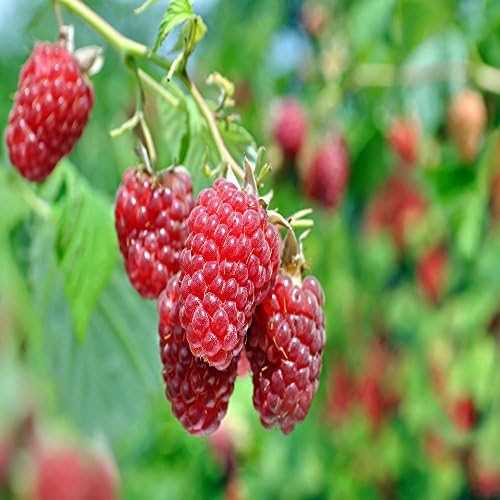
By shedding light on the deceptive tactics used to fool unsuspecting gardeners, it is hoped that more people will be aware and cautious when cultivating raspberry trees. Knowledge is the best defense against deception, and with the right information, gardeners can make informed decisions and enjoy the true beauty of the raspberry tree.
| Tactic | Warning Signs |
|---|---|
| Mislabeling of seeds | Seeds labeled as “raspberry trees” that resemble regular raspberry bush seeds |
| Rootstock substitution | Rootstock that doesn’t match the characteristics of true raspberry tree rootstock |
| Unachievable claims | Exaggerated promises about the tree’s size, fruit yield, or hardiness |
Hidden Agenda: Unveiling the True Nature of Raspberry Trees
Raspberry trees, often marketed as a delightful addition to any garden, hide a dark secret beneath their sweet facade. These seemingly innocent trees have been known to employ deceptive tactics to fool unsuspecting gardeners.
Misleading Name:
One of the most cunning strategies employed by raspberry trees is their name. While they are called “trees,” they are, in fact, not trees at all. Raspberry plants are actually perennials and belong to the rose family. This mislabeling is a deliberate ploy to lull gardeners into a false sense of security.
Aggressive Spreading:
Raspberry plants have a natural inclination to spread, and they do so with ruthless efficiency. They send out underground runners known as rhizomes, which rapidly produce new shoots and can quickly overtake a garden. This aggressive spreading can lead to raspberry trees dominating the landscape and choking out other plants.
Unrelenting Thorniness:
Hidden beneath their delicious fruits, raspberry trees are armed with sharp thorns that can inflict painful wounds. These thorns serve as a protective mechanism, deterring animals and humans from approaching the plant. They can make pruning and harvesting a treacherous task, leaving gardeners at the mercy of the raspberry tree’s hidden defense system.
The Allure of Raspberry Fruits:
While the fruit produced by raspberry plants is undoubtedly delicious, it is also a tool used to manipulate gardeners. The allure of the sweet berries can cloud the judgment of even the most experienced horticulturists, leading them to overlook the tree’s deceptive nature. This seductive tactic ensures that raspberry trees continue to thrive, despite their true agenda.
Unmasking the True Nature:
It is crucial for gardeners to be aware of the true nature of raspberry trees and the hidden agenda behind their seemingly innocent appearance. Taking precautions such as planting raspberries in contained areas or regularly pruning and maintaining the plants can help mitigate their deceptive tactics. By unmasking the true nature of raspberry trees, gardeners can avoid falling victim to their cunning strategies.
Beware of the Chameleon: How Raspberry Trees Camouflage Themselves
Raspberry trees, often considered harmless and innocent, have a secret hidden ability – they can camouflage themselves to deceive unsuspecting gardeners. This deceptive tactic allows them to blend in seamlessly with their surroundings, making it difficult to detect their presence.
There are various ways in which raspberry trees use camouflage to their advantage:
- Leaf camouflage: Raspberry trees have the remarkable ability to change the color and shape of their leaves to match the plants around them. This allows them to seamlessly blend in and avoid detection.
- Bark camouflage: Similar to their leaves, raspberry tree barks can also change colors and textures to resemble the surrounding trees. This makes it challenging to spot them among other trees in the garden.
- Trunk pattern mimicry: Raspberry trees can mimic the patterns and textures of other tree trunks, making it even more challenging to discern them from genuine trees.
- Camouflaged fruit: Not only do raspberry trees camouflage themselves physically, but they can also mimic the appearance of edible fruits like blueberries or blackberries. This tricks gardeners into mistakenly believing they have planted a different kind of tree.
This incredible ability displayed by raspberry trees is a survival mechanism developed over time. It helps them evade predators and increase their chances of reproduction.
To avoid falling victim to the deceptive tricks of raspberry trees, gardeners must remain vigilant and thoroughly inspect their garden. Here are some tips to help identify these chameleon-like trees:
- Regularly observe plants in your garden and look for any unusual leaf shapes or colors.
- Examine the bark closely and compare it to the surrounding trees, paying attention to any discrepancies.
- If you spot a tree with unusual patterns or appearances, consult a horticulturist or plant expert for confirmation.
| Feature | Description |
|---|---|
| Color-changing leaves | Raspberry leaves can change color to resemble surrounding plants. |
| Camouflaged bark | The bark can mimic the appearance of other tree barks. |
| Pattern mimicry | Raspberry trees can imitate the patterns of other tree trunks. |
| False fruit | The tree can bear fruits that resemble other edible berries. |
By staying alert and knowledgeable about the deceptive tactics employed by raspberry trees, gardeners can protect their gardens from these chameleons and ensure the well-being of their plants.
False Promises: Debunking the Exaggerated Benefits of Raspberry Trees
Raspberry trees have gained popularity among gardeners as a low-maintenance and high-yielding fruit tree. However, there are several exaggerated claims surrounding the benefits of these trees that need to be debunked.
1. Endless Supply of Raspberries
One of the most common exaggerated claims is that raspberry trees provide an endless supply of raspberries throughout the year. While it is true that raspberry trees can produce a bountiful harvest, they have a relatively short fruiting season, typically during the summer months. The rest of the year, you may not see any raspberries on your tree.
2. Minimal Maintenance and Care
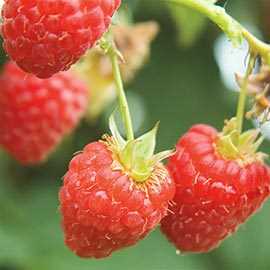
Another misleading claim is that raspberry trees require minimal maintenance and care. While raspberry trees are generally easy to grow, they still require proper care to thrive and produce quality fruits. Regular pruning, watering, and fertilizing are necessary to ensure healthy growth and abundant harvest. Neglecting these tasks can result in subpar fruit production or even the death of the tree.
3. Disease and Pest Resistance
Raspberry trees are often portrayed as highly resistant to diseases and pests. While they do have a certain level of natural resistance, they are still susceptible to common diseases such as fungal infections and pests like aphids and raspberry beetles. Regular monitoring and appropriate pest control measures are necessary to prevent these issues and maintain a healthy tree.
4. Fast Growth and Early Fruiting
Some advertisements claim that raspberry trees have fast growth rates and will start producing fruits within a short period. In reality, raspberry trees have a moderate growth rate and typically take a few years to reach maturity and start fruiting. It is important to have realistic expectations and be patient when growing raspberry trees.
5. One-Time Investment
Raspberry trees are often marketed as a one-time investment that will yield fruits for years to come. While raspberry trees can be long-lived, they still require ongoing care and occasional replacements. Over time, you may need to replace aging trees or address disease issues, which can incur additional costs.
It is crucial for gardeners to separate the truth from exaggerated claims when considering raspberry trees for their gardens. By understanding the realistic benefits and requirements of these trees, gardeners can make informed decisions and successfully grow and enjoy raspberries in their own backyard.
Invasive Invaders: Understanding the Destructive Impact of Raspberry Trees
Raspberry trees may seem innocuous, with their vibrant colors and sweet berries, but they can be invasive invaders that wreak havoc on your garden. Understanding the destructive impact of raspberry trees is crucial for any gardener looking to maintain the health and balance of their garden.
1. Root System Invasion
Raspberry trees have an extensive root system that spreads out horizontally underground, sometimes spanning several meters. This aggressive root system enables raspberry trees to outcompete other plant species for essential nutrients and water, ultimately depriving them of the resources they need to survive.
Impact: This can lead to the decline or even death of other plants in your garden, leaving behind a barren and unproductive space.
2. Shade and Light Competition
Raspberry trees grow tall and dense, casting a shadow that can inhibit the growth of plants underneath. The shade created by their dense foliage reduces the amount of sunlight reaching other plants, affecting their ability to carry out photosynthesis and produce energy.
Impact: The lack of sunlight can lead to stunted growth, reduced flower production, and decreased overall plant health.
3. Seeding and Reproduction
Raspberry trees are prolific seed producers. Their berries are enjoyed by birds and animals, who then spread the seeds far and wide through their droppings. These seeds can take root and rapidly multiply, quickly taking over an area and displacing native plants.
Impact: The aggressive seeding and reproduction habits of raspberry trees can lead to the formation of dense thickets, further crowding out native species and disrupting the balance of the ecosystem.
4. Difficulty of Eradication
Once established, raspberry trees can be incredibly challenging to remove. Their deep and interconnected root system makes it difficult to completely uproot them. Even cutting them back only serves to encourage their growth, as they have the ability to regenerate from the roots.
Impact: The persistence of raspberry trees makes them a formidable foe, making eradication efforts time-consuming and costly.
Conclusion
Understanding the destructive impact of raspberry trees is essential for gardeners who seek to maintain a healthy and thriving garden ecosystem. Taking proactive measures to prevent their spread and managing their growth is crucial in mitigating their destructive effects.
Remember: Stay vigilant and be cautious when introducing raspberry trees into your garden, as their seemingly innocent allure may mask the potential havoc they can wreak.+
The Whisperers: Unmasking the Seed Dispersal Tactics of Raspberry Trees
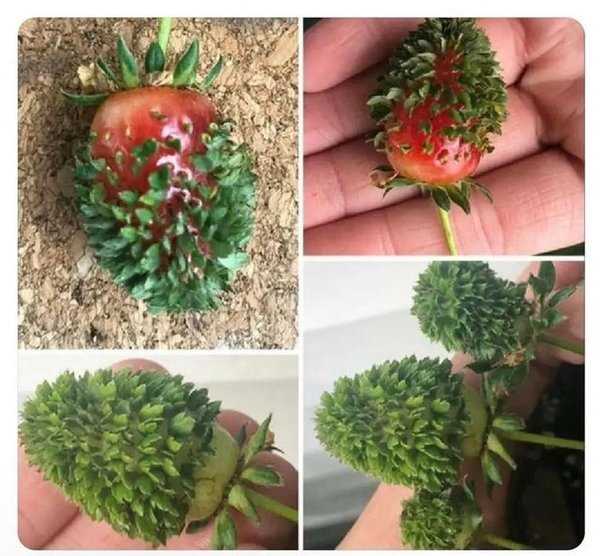
Raspberry trees, commonly found in gardens and forests, have long fascinated gardeners and nature enthusiasts alike. Known for their delicious fruits, these trees also possess a clever method of seed dispersal that often goes unnoticed. This article aims to shed light on the deceptive tactics employed by raspberry trees to spread their seeds far and wide, ensuring their survival and proliferation.
1. The Disguised Messenger: Birds
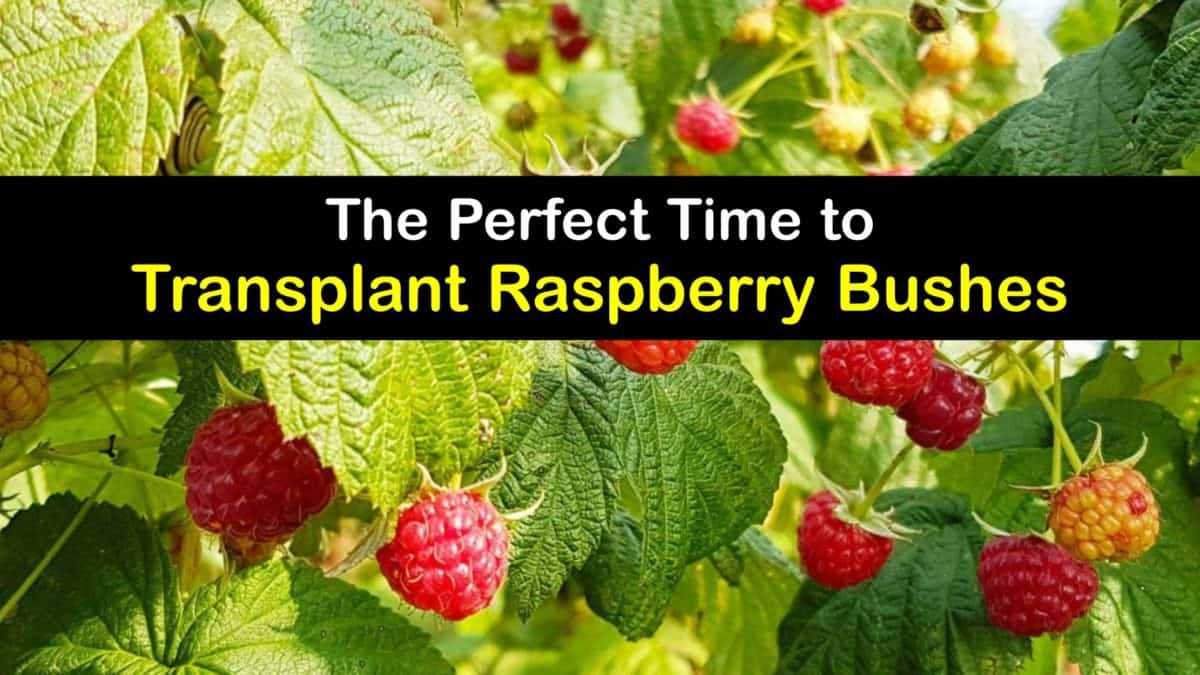
One of the most effective ways raspberry trees disperse their seeds is through avian intermediaries. The trees produce succulent and sweet berries that act as bait, enticing birds to consume them. Unbeknownst to the birds, however, raspberry seeds are coated in a hard shell that remains unaffected by the digestive process. This enables the seeds to pass through the bird’s digestive tract unharmed, ready to be deposited in new locations through their droppings.
2. Nature’s Bounty Hunters: Rodents
Raspberry trees also employ the aid of small rodents, such as squirrels and mice, to disperse their seeds. These animals are attracted to the tasty berries produced by the trees and often indulge in them. While consuming the fruits, the rodents inadvertently ingest the seeds. As they move around and burrow in search of food and shelter, they unintentionally scatter the seeds in different places, helping the raspberry trees expand their territory.
3. Wind: A Silent Partner
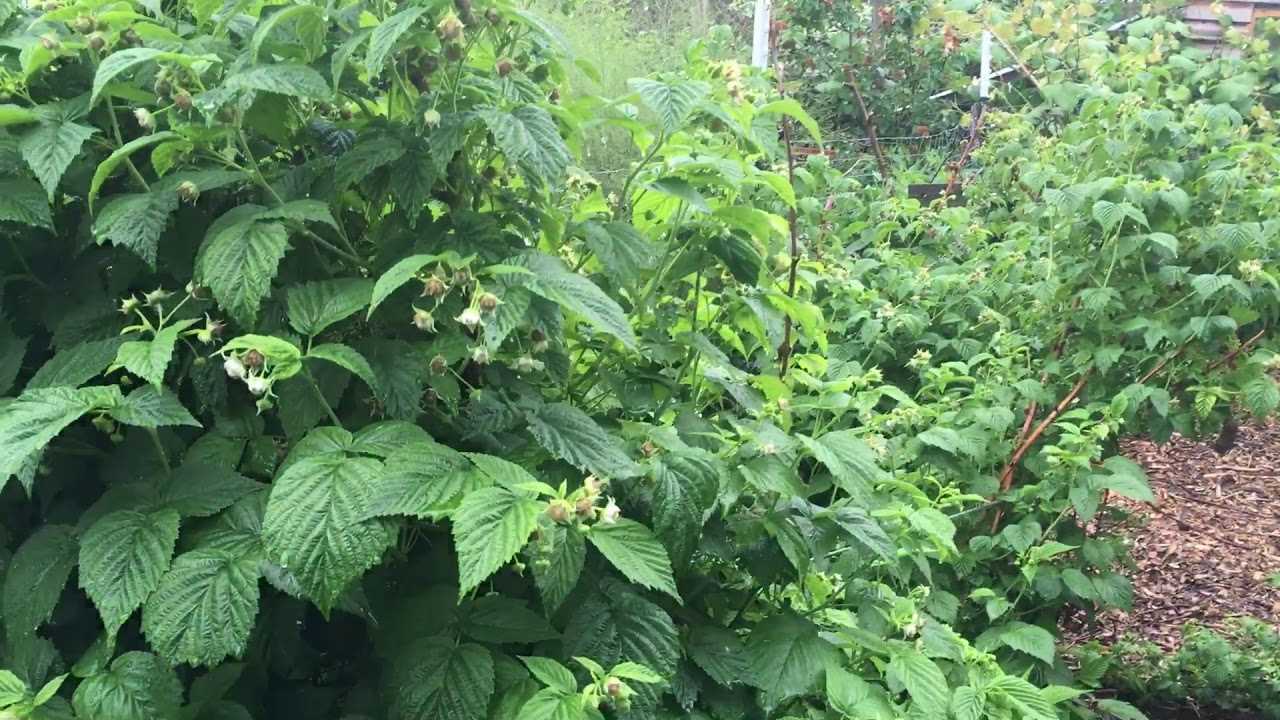
Though not as directly controlled by the raspberry trees, wind plays a crucial role in seed dispersal. The lightweight seeds of raspberry trees possess small bristles that act like tiny wings, enabling them to catch the wind and travel significant distances from their source tree. This method allows the trees to colonize new areas and establish a presence in diverse habitats.
4. Human Intervention: Unwitting Accomplices
Humans, too, have inadvertently played a part in the dispersal of raspberry tree seeds. Often cultivated in gardens and horticultural settings, raspberry trees are appreciated for their fruits but are frequently underestimated in their seed-dispersal capabilities. When gardeners discard old fruit or prune and dispose of branches, they unknowingly contribute to seed dispersal, as the discarded parts may contain seeds that can germinate and grow in unexpected locations.
Conclusion
The seed dispersal tactics employed by raspberry trees are a testament to the ingenuity of nature. Through the collaboration of birds, rodents, wind, and even human activity, these trees ensure the widespread distribution of their seeds. By understanding these deceptive tactics, gardeners and nature enthusiasts can gain a deeper appreciation for the complexities and hidden strategies employed by the natural world.
Shapeshifters in Disguise: Recognizing the Changing Faces of Raspberry Trees
Raspberry trees are notorious for their deceptive nature, constantly changing their appearance throughout the year. These shapeshifters can easily fool unsuspecting gardeners, making it difficult to properly care for and maintain these plants. In this section, we will discuss the various disguises that raspberry trees adopt and provide tips on how to recognize their true identity.
1. The Innocent Sprout
At the start of the growing season, raspberry trees emerge as innocent sprouts, barely distinguishable from other plants in your garden. These sprouts may resemble common weeds or grass, leading gardeners to accidentally remove them while weeding. It’s important to be vigilant during this stage and familiarize yourself with the distinct characteristics of raspberry sprouts.
2. The Climbing Vine
As raspberry trees mature, they begin to grow long, flexible canes that resemble a climbing vine. These canes can reach impressive heights and may creep along fences or other structures in your garden. It is essential to support and tie these canes to prevent them from collapsing under the weight of fruit or snapping due to strong winds.
3. The Blossoming Beauty
The most enchanting phase of a raspberry tree’s transformation is when it bursts into vibrant blooms. Delicate white or pink flowers cover the canes, attracting pollinators and creating a picturesque sight in your garden. Take this opportunity to appreciate the beauty of these blossoms and know that a bountiful harvest is nearing.
4. The Fruiting Master
As summer approaches, raspberries transform into fruiting machines. The once unassuming sprouts now bear plump, juicy berries in various shades of red, yellow, or purple. It’s time to savor the sweet rewards of your labor and indulge in the delicious harvest.
5. The Dormant Warrior
During the winter months, raspberry trees shed their leaves and enter a dormant state, resembling lifeless sticks jutting out from the ground. Don’t let this appearance fool you – the tree is storing energy and preparing for the next growing season. Prune these lifeless canes to encourage new growth and ensure a healthy harvest in the following year.
By understanding the different disguises that raspberry trees adopt throughout the year, you can better care for and appreciate these versatile plants. Take note of the distinct features of each stage and adjust your gardening practices accordingly to ensure the longevity and productivity of your raspberry trees.
Master Manipulators: Exposing the Manipulative Techniques of Raspberry Trees
Raspberry trees, with their enticing fruits and lush green leaves, may seem innocent at first glance. However, these seemingly harmless plants are actually master manipulators, employing deceptive tactics to fool unsuspecting gardeners. In this article, we’ll uncover the cunning techniques used by raspberry trees to control their environment and ensure their own survival.
1. Aggressive Root Systems
One of the most insidious ways raspberry trees manipulate their surroundings is through their aggressive root systems. These trees send out long, creeping roots that can quickly take over an area of the garden, competing with other plants for resources such as water and nutrients. This allows raspberry trees to establish dominance, choking out nearby vegetation and ensuring they have access to all the resources they need to thrive.
2. High Reproductive Capacity
Raspberry trees are prolific reproducers, and this is another tool in their manipulative arsenal. These trees produce an abundance of seeds, which can be spread far and wide by birds and other animals. This ensures that new raspberry trees can sprout up in unexpected places, further expanding their territory and dominance. With their rapid growth and ability to reproduce quickly, raspberry trees can outcompete other plant species and establish themselves as the dominant presence in a garden.
3. Allelopathy
Another manipulative tactic employed by raspberry trees is allelopathy, a phenomenon where certain plants release chemicals that inhibit the growth of other plants. Raspberry trees produce allelopathic compounds that can suppress the growth of nearby vegetation, giving them a competitive edge. By releasing these chemicals, raspberry trees limit the resources available to other plants, ensuring their own survival and dominance.
4. Thorny Defenses
While raspberries themselves may be delicious to humans, the plants use thorny defenses to ward off potential threats. Raspberry trees are covered in sharp thorns that deter animals from grazing on their leaves or fruits. This protection ensures that the plants are less likely to be damaged or destroyed, allowing them to continue manipulating their environment without interference.
5. Rapid Growth and Expansion
Raspberry trees are renowned for their rapid growth and ability to quickly establish new plants. With their fast-growing shoots and extensive root systems, these trees can colonize new areas of a garden in no time. By rapidly expanding their population, raspberry trees can outpace other plants, monopolize resources, and effectively manipulate their environment to suit their needs.
In conclusion, raspberry trees may appear innocent, but they are actually master manipulators. Through their aggressive roots, high reproductive capacity, allelopathic chemicals, thorny defenses, and rapid growth, these trees exert control over their environment, outcompeting other plants and ensuring their own survival. By understanding these manipulative techniques, gardeners can better protect their gardens and prevent raspberry trees from taking over.
Uncovering the Truth: How to Protect Your Garden from Raspberry Tree Deception
Gardening can be a rewarding and fulfilling hobby, but sometimes we encounter unexpected challenges. One such challenge is the deceptive tactics employed by raspberry trees. These trees, often disguised as harmless shrubs, can wreak havoc on your garden if left unchecked.
Recognizing the Raspberry Tree
The first step in protecting your garden from raspberry tree deception is to be able to identify these imposters. Raspberry trees are typically taller and more robust than your average raspberry bush. They often have a thick trunk and branches that resemble those of a small tree.
Additionally, raspberry trees may produce fruit that is larger and more abundant than that of a traditional raspberry bush. This can be a tempting lure for gardeners who are unaware of their true nature.
Preventing Raspberry Tree Invasion
To protect your garden from the invasive nature of raspberry trees, there are several steps you can take:
- Research: Before planting any raspberry bushes or trees in your garden, thoroughly research the specific variety you plan to use. Look for information on growth habits, size, and fruit production. This will help you distinguish between true raspberry bushes and potential raspberry trees.
- Proper pruning: Regularly prune your raspberry plants to control their growth and prevent them from developing into trees. Remove any suckers or rogue branches that may be trying to take over. This will help keep your raspberry patch contained and prevent the spread of raspberry trees.
- Maintenance: Be diligent in maintaining your raspberry patch by removing any new growth that appears to be more tree-like than bush-like. Early intervention is crucial to prevent the establishment of raspberry trees in your garden.
- Regular inspections: Regularly inspect your raspberry plants for signs of tree-like growth. Be on the lookout for larger, more robust branches that resemble tree branches rather than traditional raspberry canes.
Removing Raspberry Trees
If you do discover a raspberry tree within your garden, it is important to take immediate action to remove it. Raspberry trees can quickly spread and take over an entire area if left unchecked.
To remove a raspberry tree:
- Cut the tree down to its base using a sharp pair of pruning shears or a saw.
- Remove as much of the tree’s root system as possible to prevent it from regrowing.
- Dispose of the tree and its roots in a manner that prevents them from taking root elsewhere.
Conclusion
Gardening is a wonderful hobby, but it’s important to stay vigilant against deceptive plants like the raspberry tree. By recognizing the signs of raspberry tree deception, taking preventative measures, and promptly removing any trees that do appear, you can protect your garden and enjoy the true beauty of raspberries without any unwelcome surprises.
Question-answer:
What are some deceptive tactics used by raspberry tree sellers?
Some deceptive tactics used by raspberry tree sellers include mislabeling non-fruiting trees as fruiting ones, selling damaged or diseased trees, providing false information about the tree’s growth habits or maintenance requirements, and promoting unrealistic yield expectations.
How can I tell if a raspberry tree is non-fruiting?
One way to tell if a raspberry tree is non-fruiting is by looking at the label or description provided by the seller. If it specifies that the tree is ornamental or decorative, it is likely non-fruiting. Another way is to examine the tree itself for any signs of fruits or flowers. Non-fruiting raspberry trees will not produce any fruits or flowers.
What are some signs that a raspberry tree is damaged or diseased?
Some signs that a raspberry tree is damaged or diseased include wilting or drooping leaves, discolored or spotted foliage, presence of pests or insects, hollow or rotten branches, and stunted growth. It is important to thoroughly inspect the tree before purchasing to ensure its health and quality.
Are there any specific maintenance requirements for raspberry trees?
Yes, there are specific maintenance requirements for raspberry trees. They require regular pruning to promote healthy growth and to remove any diseased or damaged branches. Raspberry trees also need sufficient sunlight, well-draining soil, and regular watering. Additionally, they may require support structures, such as a trellis, to help them grow upright.
What is a realistic yield expectation for raspberry trees?
A realistic yield expectation for raspberry trees can vary depending on various factors such as the variety of raspberry, growing conditions, and care provided. On average, a healthy raspberry tree can yield around 2 to 4 pounds of raspberries per year. It is important to manage expectations and not fall for exaggerated claims made by sellers.
How can I protect myself from deceptive tactics when buying raspberry trees?
To protect yourself from deceptive tactics when buying raspberry trees, it is important to do thorough research beforehand. Read reviews and ratings of the seller or nursery you’re purchasing from, ask for recommendations from fellow gardeners, and educate yourself about raspberry tree varieties and their characteristics. Inspect the tree in person before purchasing, ask questions to clarify any doubts, and only buy from reputable sources.
Do raspberry trees require any specific fertilizers?
Raspberry trees do benefit from proper fertilization. They generally require a balanced fertilizer that is high in nitrogen, potassium, and phosphorus. Organic options, such as compost or well-rotted manure, can also be used to enrich the soil. It is recommended to fertilize raspberry trees in early spring or late fall, following the specific instructions provided by the fertilizer manufacturer.







